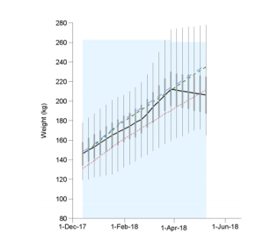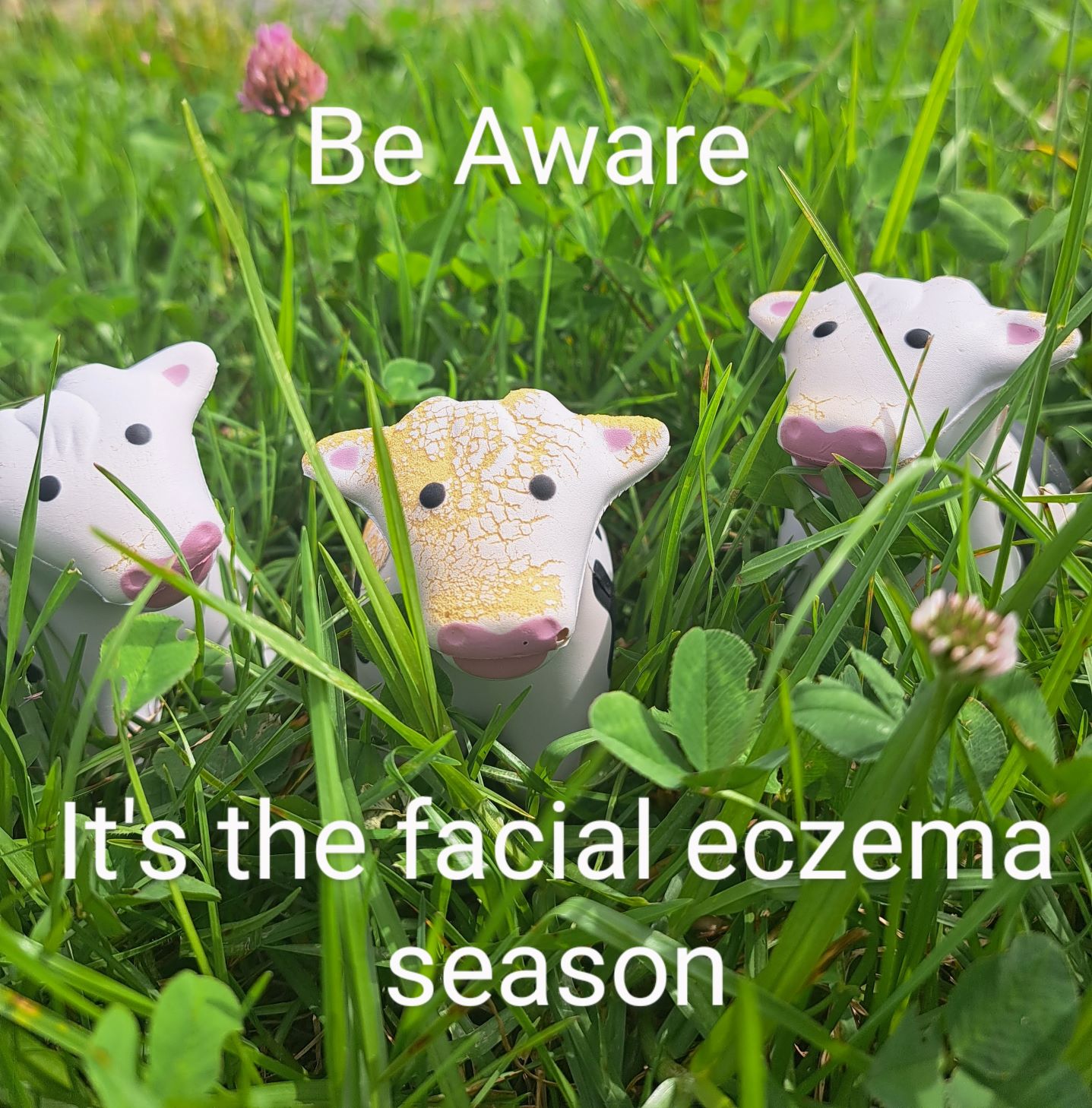Facial Eczema in Cattle
By Bridget Clark – NZG Operational Manger
Facial Eczema (FE) is a disease of the liver caused by a mycotoxin (sporidesmin) found in pastures that affects all ruminants even when they have low exposure to the fungus (Pithomyces Chartarum). This fungus grows on dead and dying pasture litter when moisture and temperatures are favourable for fungal growth and therefore spore production. This usually begins towards the end of January or early February, but especially when the nights become warm and humid (>12 degrees Celsius), or when a dry period is followed by rain. Adequate zinc levels protect the liver from such damage. A slow build-up of spores and continual exposure over a period of time will also result in risk levels similar to high spore
counts.
Sporidesmin attacks the liver cells causing damage and blockage to the bile ducts where
there is insufficient zinc for protection.
Zinc is a protective preventative treatment against facial eczema.
The end of the FE season varies and is usually when night temperatures are consistently below 12 degrees Celsius. Confirm the reduced FE challenge by taking spore counts until they are consistently below 10,000 spores/g (pasture) for 3 weeks. The FE season is changing and has been seen to start as early as November and December in some places.
Spores can also still be present in June for some areas as well.
Management tips to prevent Facial Eczema
1. Avoid;
a. grazing below 4cm pasture height during summer months
b. the build up of dead litter in the pasture sward (topping pastures can contribute to this)
DO;
c. feed alternate pastures (eg chicory, plantain, turnips…) and supplements (silage, hay, meal, PKE, maize silage….)
d. windy exposed areas have lower spores (than sheltered areas)
2. Monitor your farms spore counts – your farm is different to your neighbours. Spore counts can be highly variable across regions even between individual paddocks. Start your farms monitoring when regional pasture counts reach 20,000 spores. Test at least weekly to ensure you know what your FE challenge is. Monitoring can be done either by pasture sampling pre-grazing. Or faecal sampling to identify spore ingestion levels.
3. Timely Zinc dosing – start zinc dosing early don’t wait for high spore levels before getting zinc into your stock. Weigh animals to ensure correct dosage rates. Remember dry stock (non-lactating animals) do not drink sufficient water to obtain protective zinc levels via the water trough system.
The most effective way to protect ruminants from FE is by giving them a long acting (4-6 weeks) intra-ruminal zinc bolus. To ensure adequate FE protection boluses must be given according to an animal’s weight. Zinc binds to the toxin to prevent the toxin causing damage. If there is not enough zinc it won’t protect the animal.
Fungicide spraying of pastures is also an effective way to prevent stock against FE but only in growing pastures and where spore counts are not over 20,000/g (pasture).
Avoid copper treatments until after the FE season is over and administered zinc has gone from the animals system. Copper not only reduces zinc uptake but also enhances the toxic effects of sporodesmin.
Many of your local vet practices will test for pasture spores free of charge or at least provide a pasture spore count service.
All our growers for NZ Grazing are supplied with Techion faecal testing kits providing them with a faecal spore testing system that makes it simple for them to test as often as they like. Below is a weight graph for heifers that got FE with no zinc protection a few years ago. The impact of FE is rapid weight loss, very unwell animals and in some cases can result in death. Protection from FE is very important. There has been little to no genetic selection for FE tolerance in dairy cattle.

Remember, for every animal with clinical/obvious FE, there will be 5, 10 or more other animals affected with FE. It will be the tip of the iceberg. The production losses will be far greater than are visible.
And now for some FE myth busting!
Sun burn or photosensitivity indicates that facial eczema has broken out from the inside and the animal is therefore getting better. This statement has no scientific basis at all. The photosensitisation of the skin is caused by a compromised liver not able to process chlorophyll.
BUSTED
Black and brown coloured animals are resistant to facial eczema. This is not true. Animals with black or brown skin colour have melanin in their skin to protect them from sunburn. Signs of facial eczema are just more insidious such as weight loss, scouring, red eyes.
BUSTED
The pregnant cow with liver damage can use that of the foetus to survive but will end up dying after calving. Again physiologically, this is not possible. The calf and dam’s blood do not mix and nutrition, gas exchange and waste elimination is via the placenta. The cow’s liver does the job of the foetal liver until it becomes fully functional about the last trimester. Expulsion of the calf actually reduces the load on the dam but parturition itself is a stressful event and a dam with a severely compromised liver may die during the process as a result of liver failure.
BUSTED
Editing and myth busting acknowledgments Dr Jacquie Lorenz, BVSc

